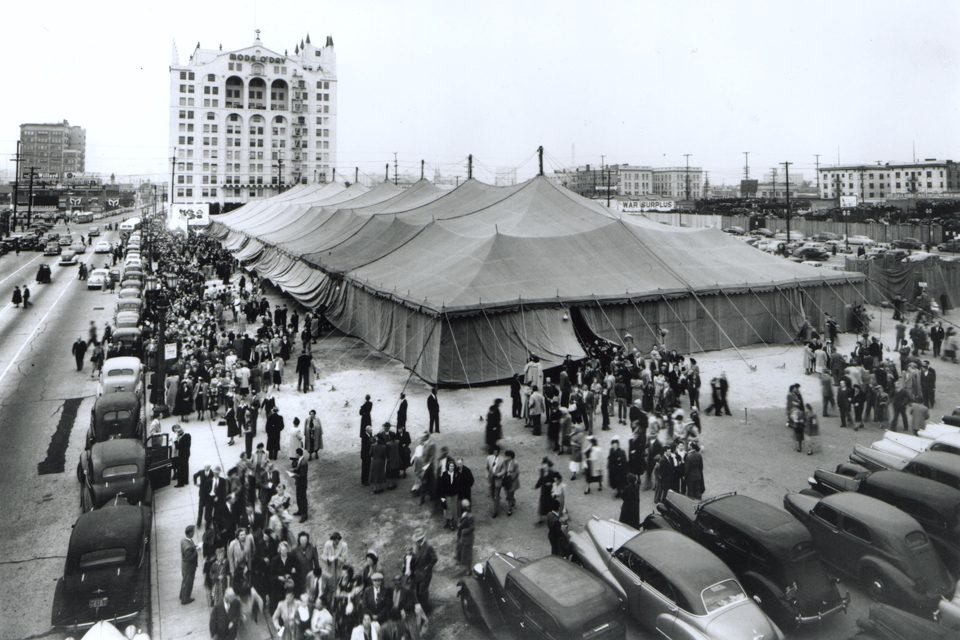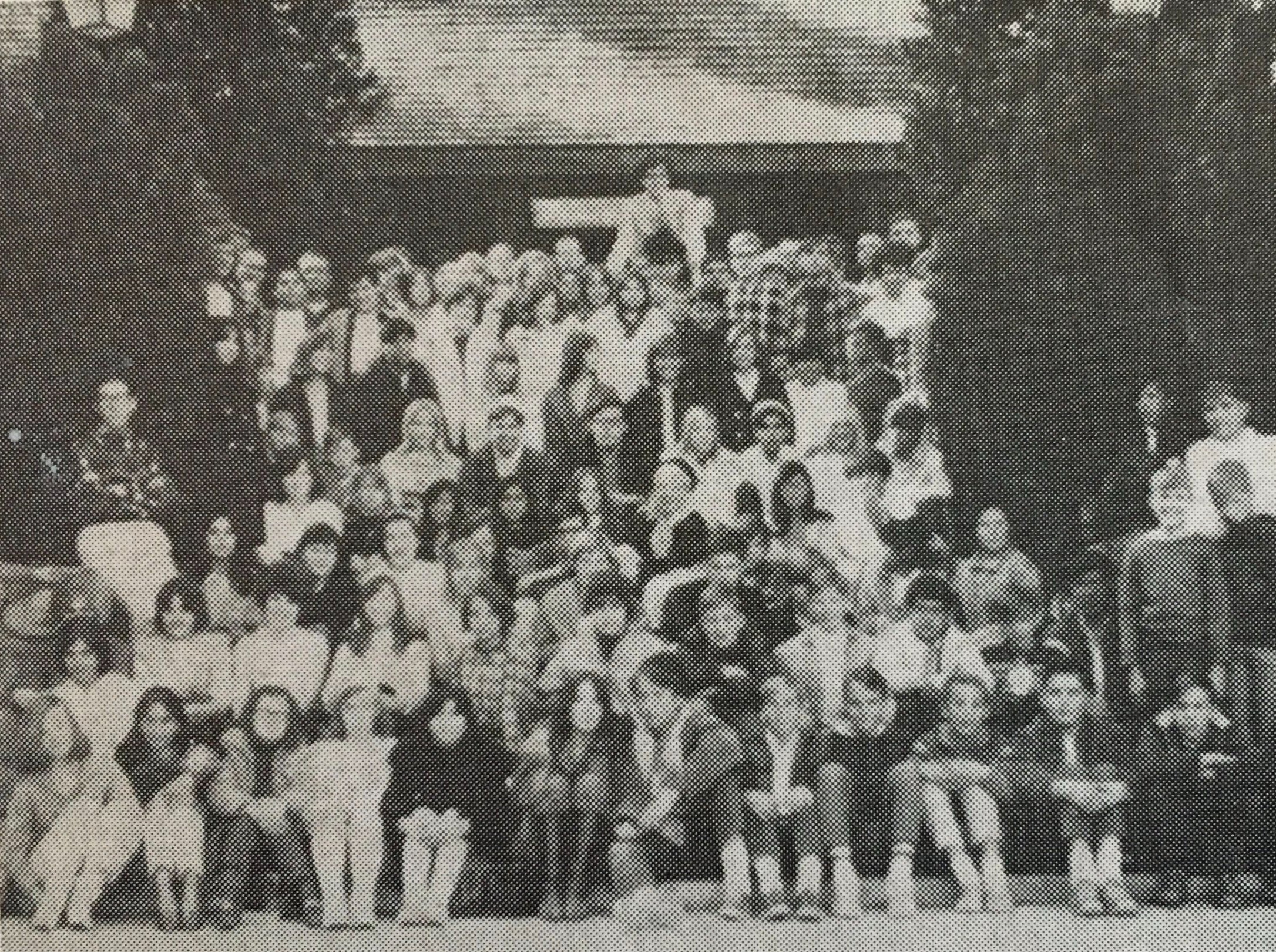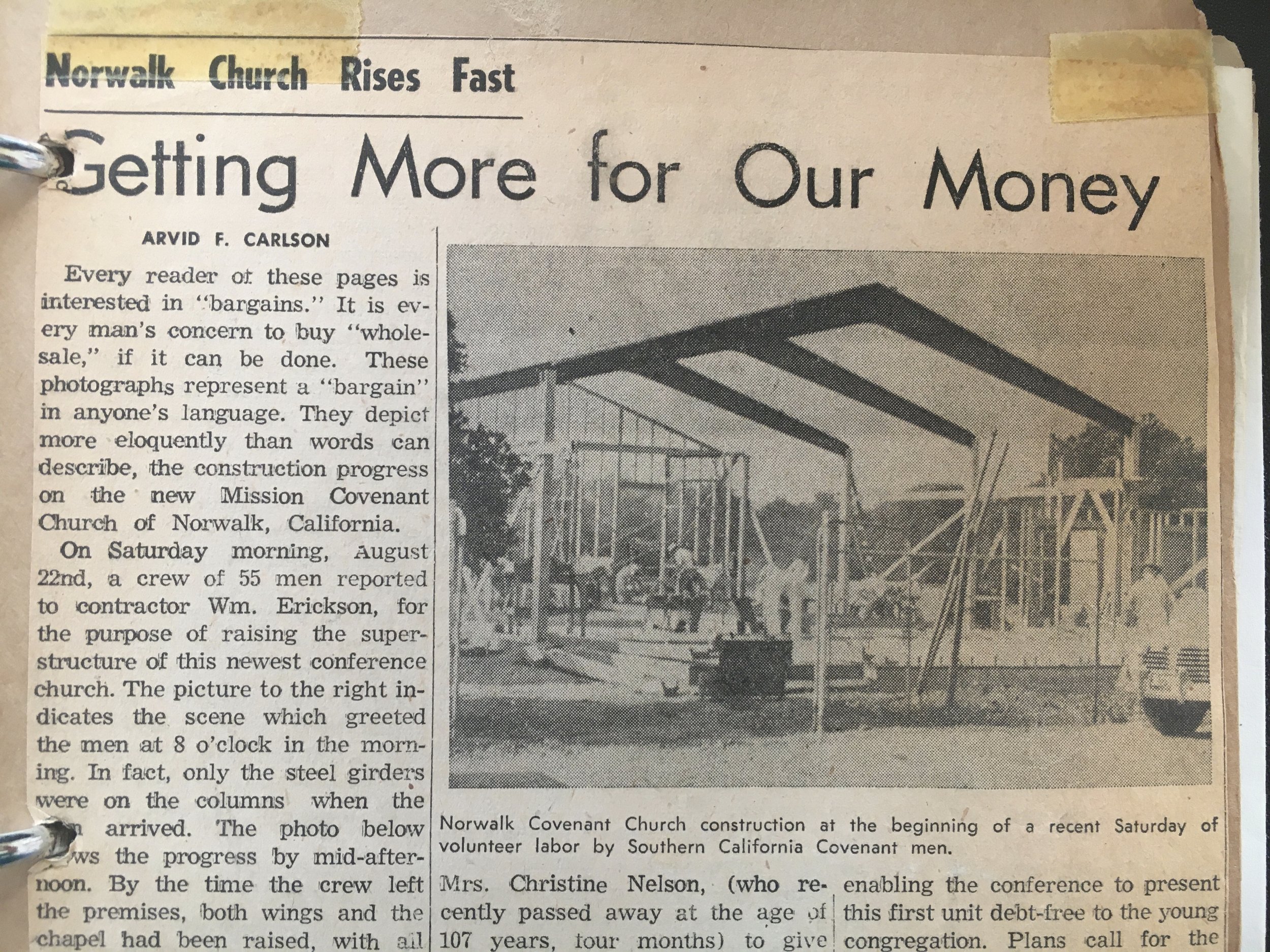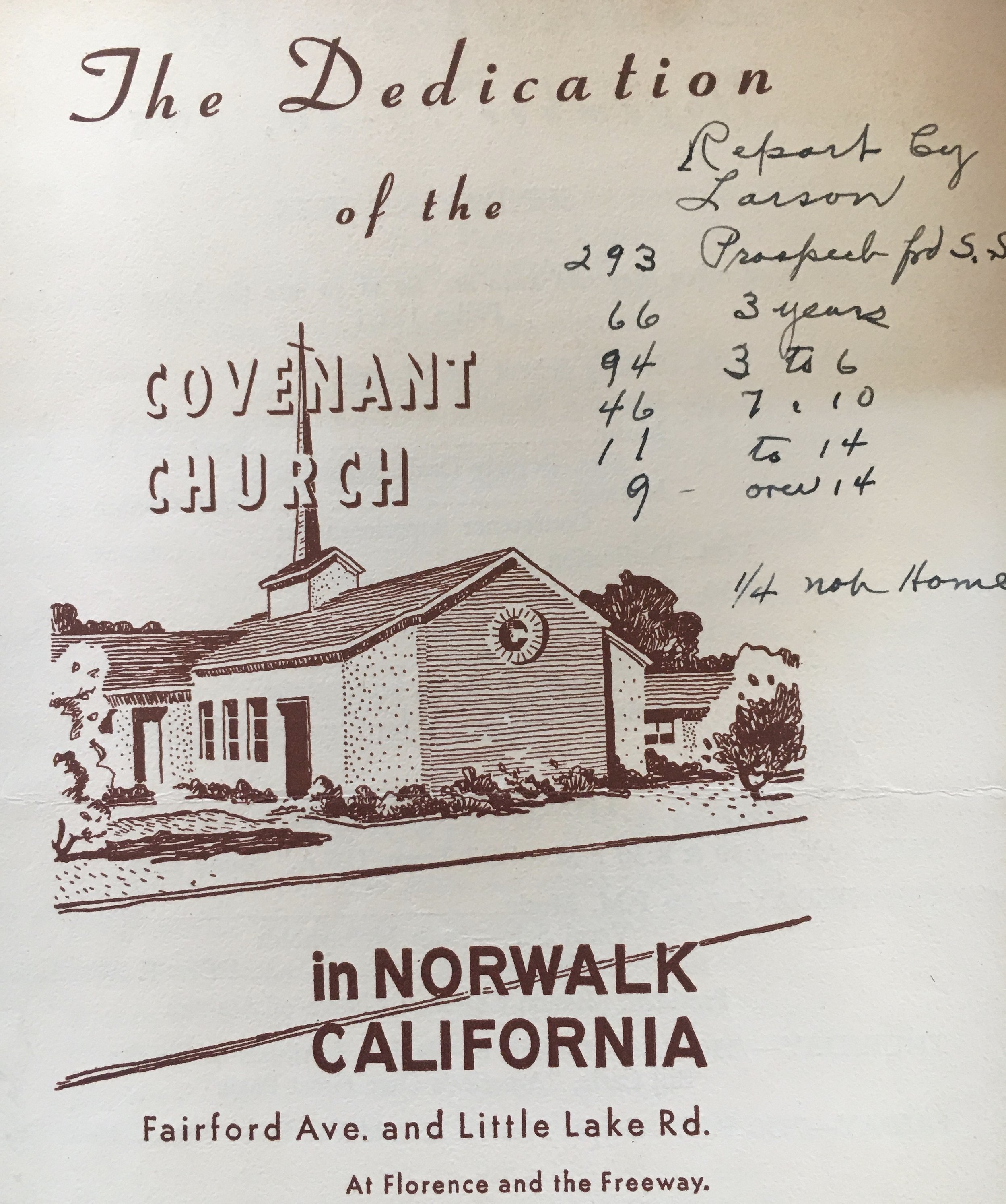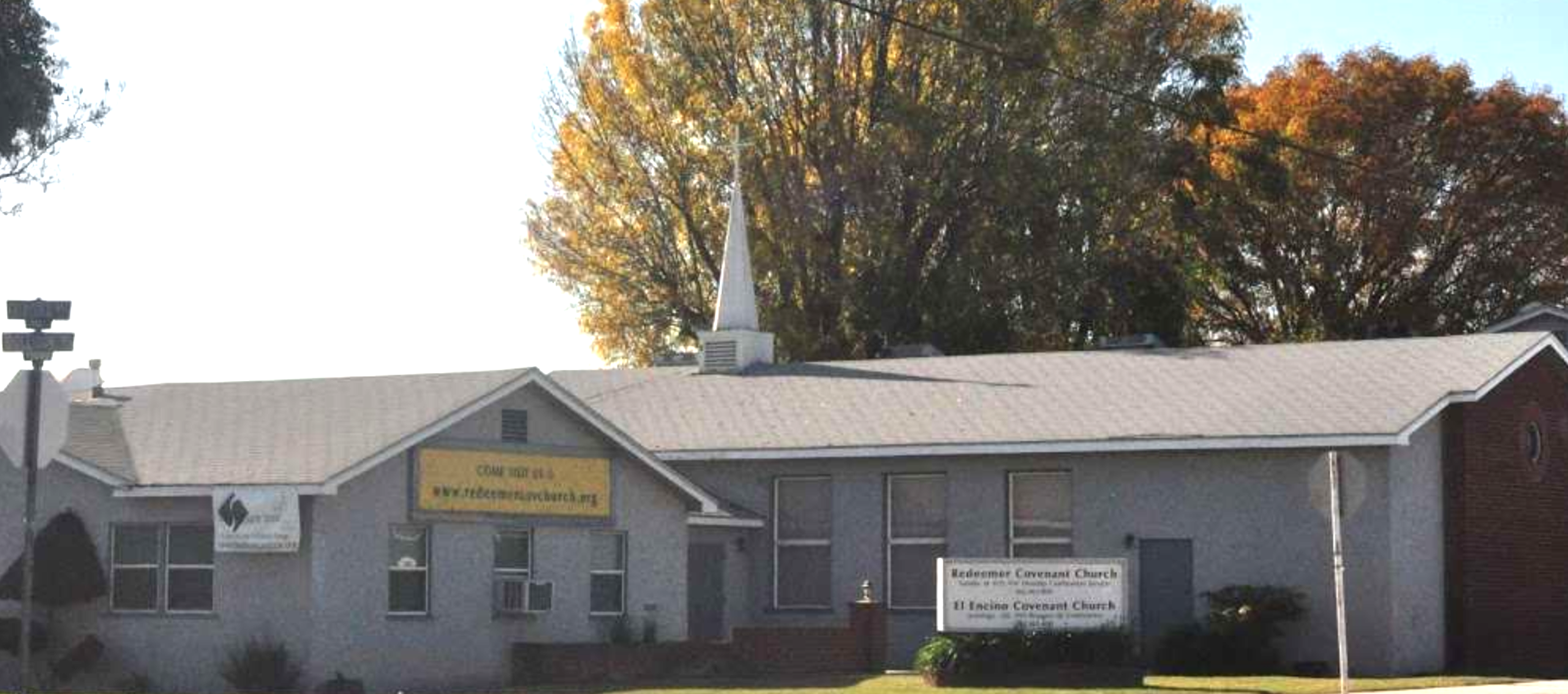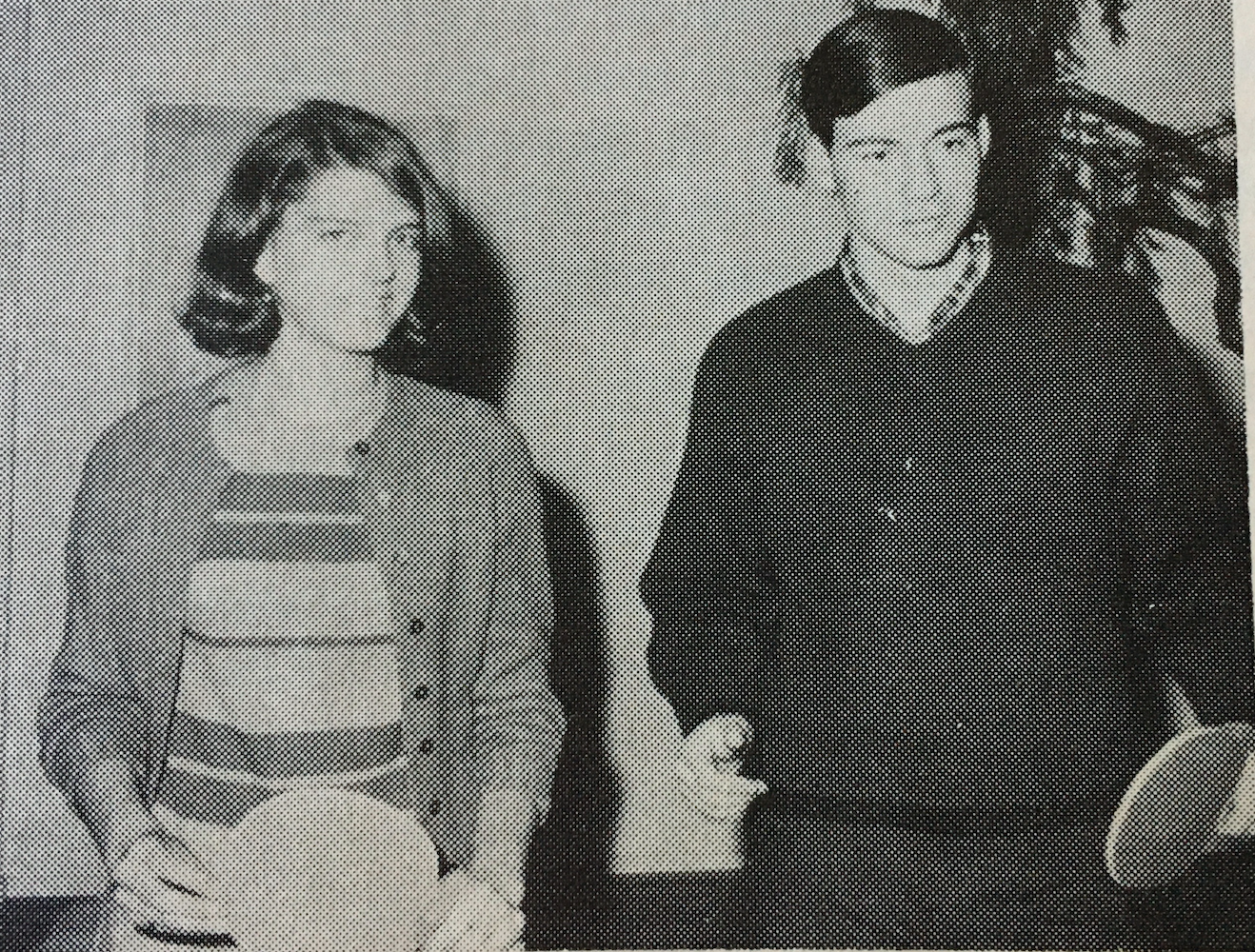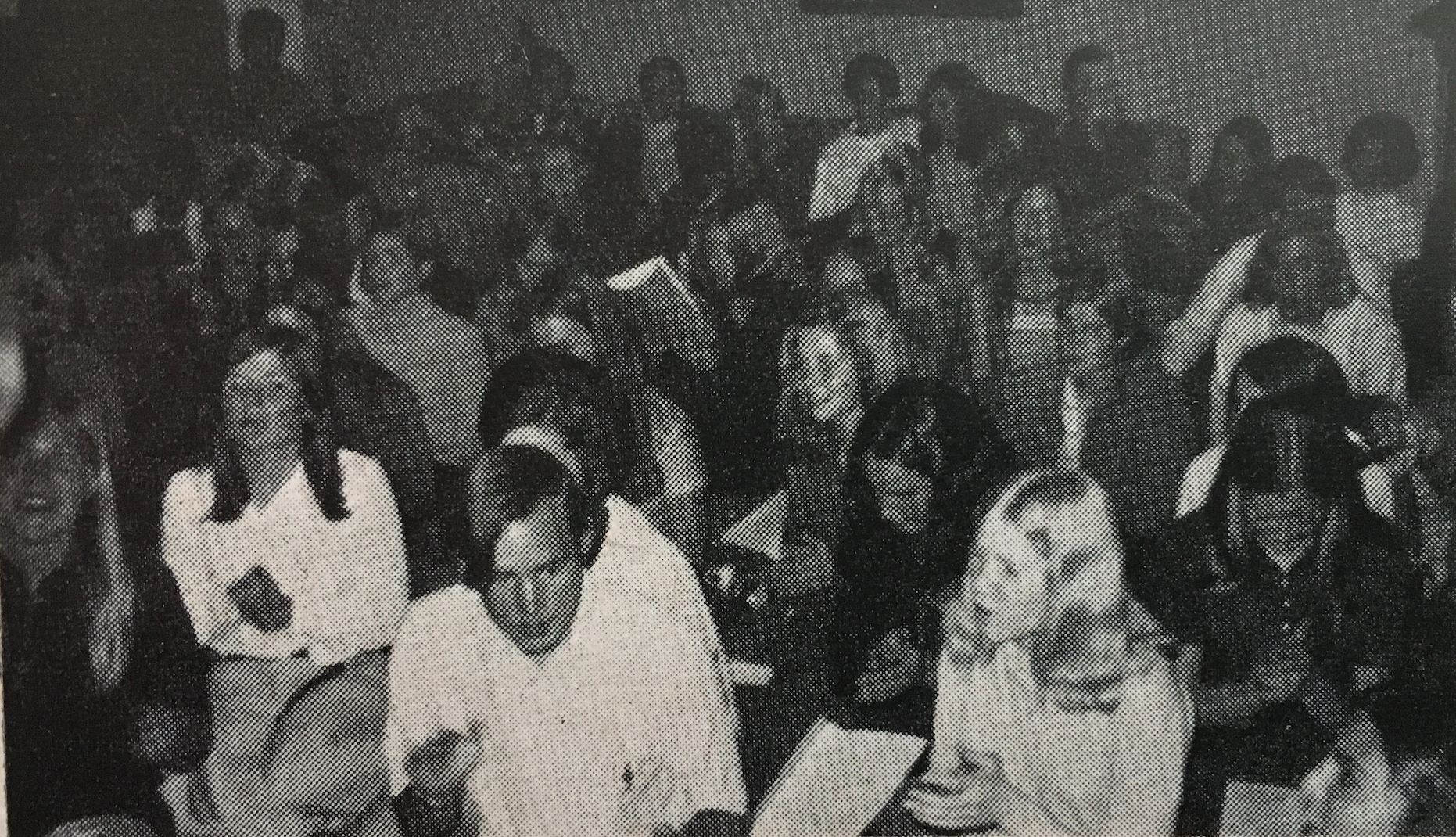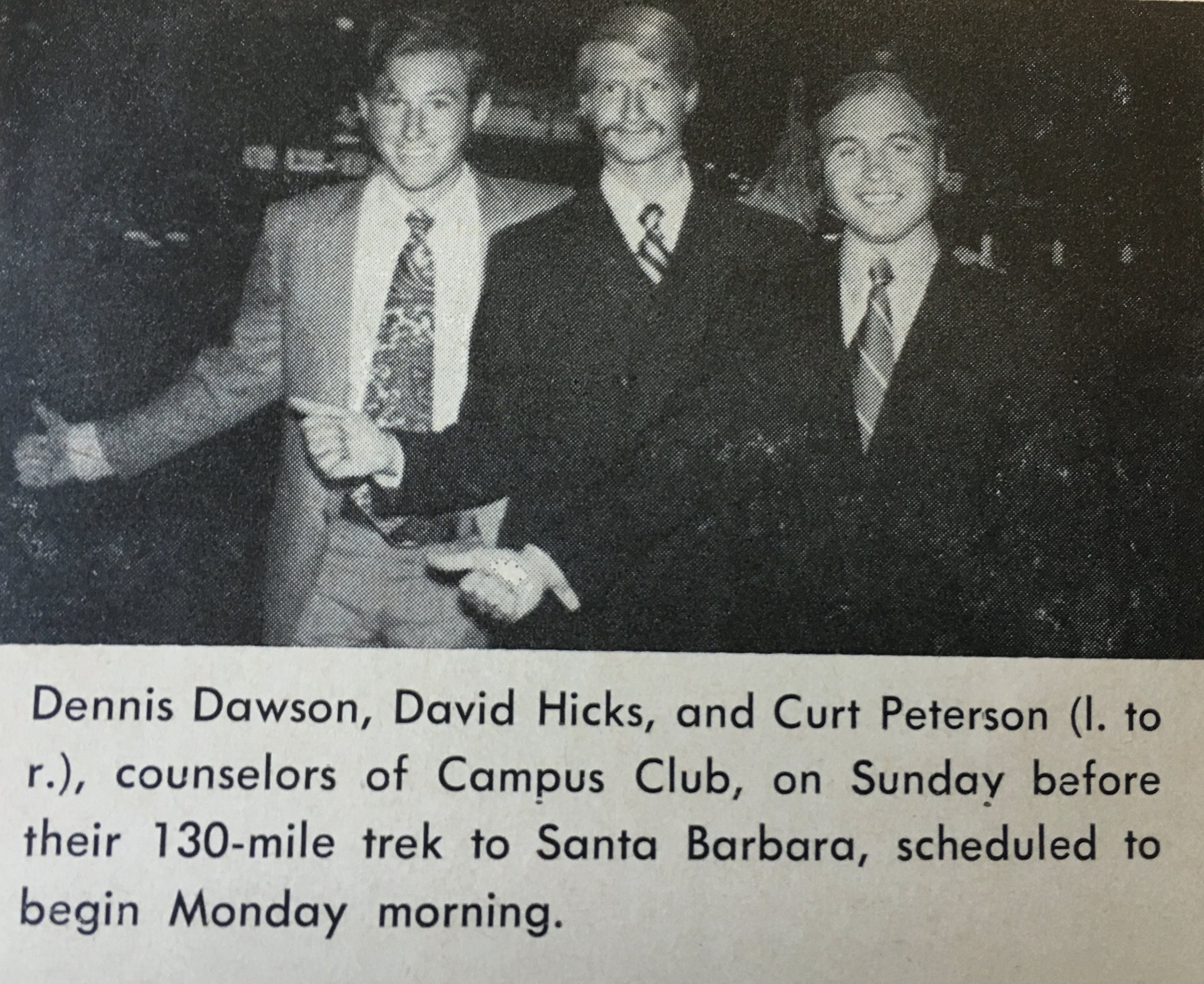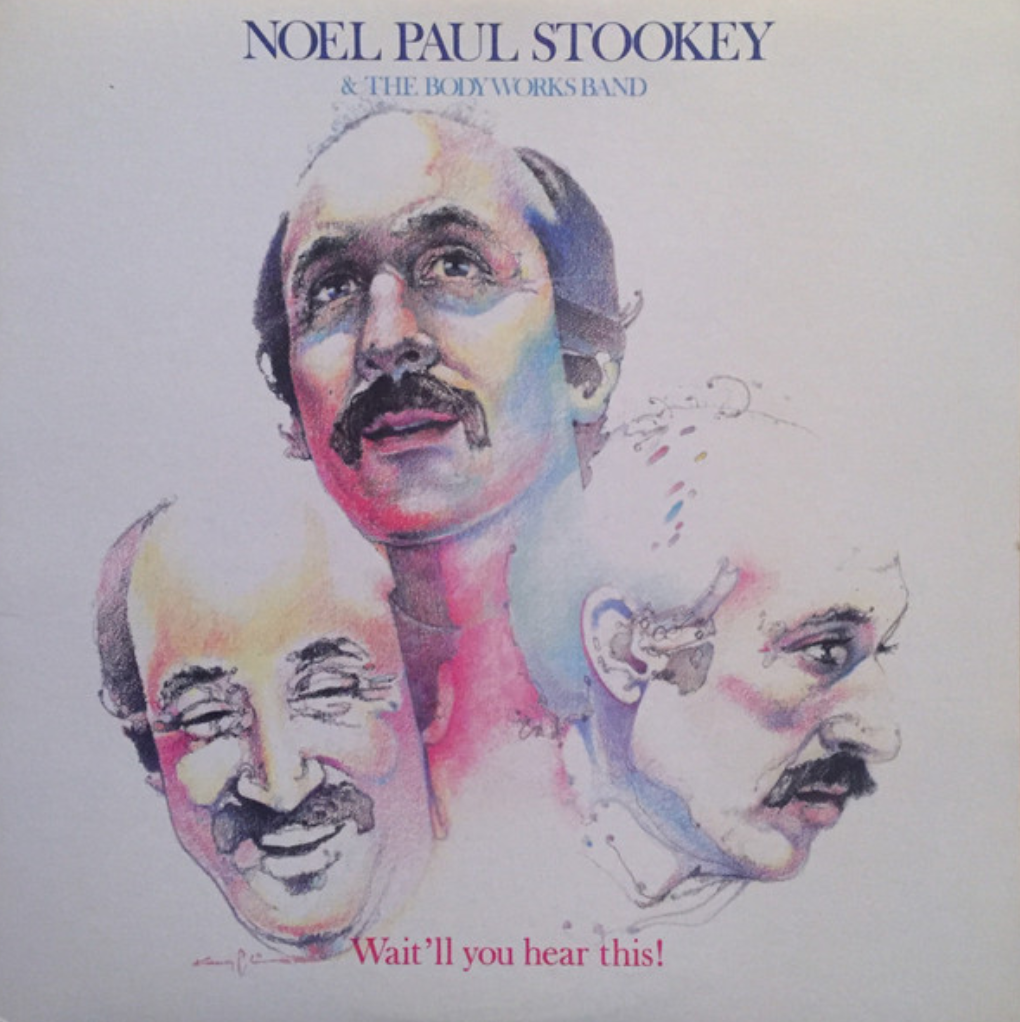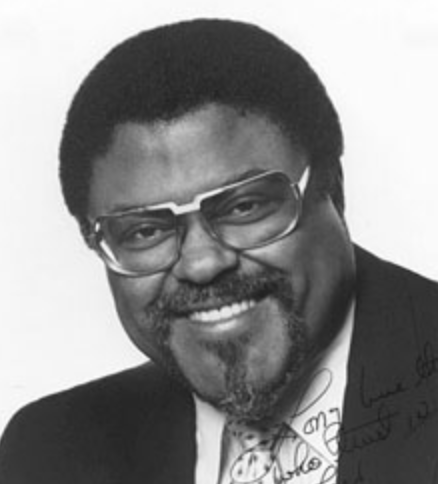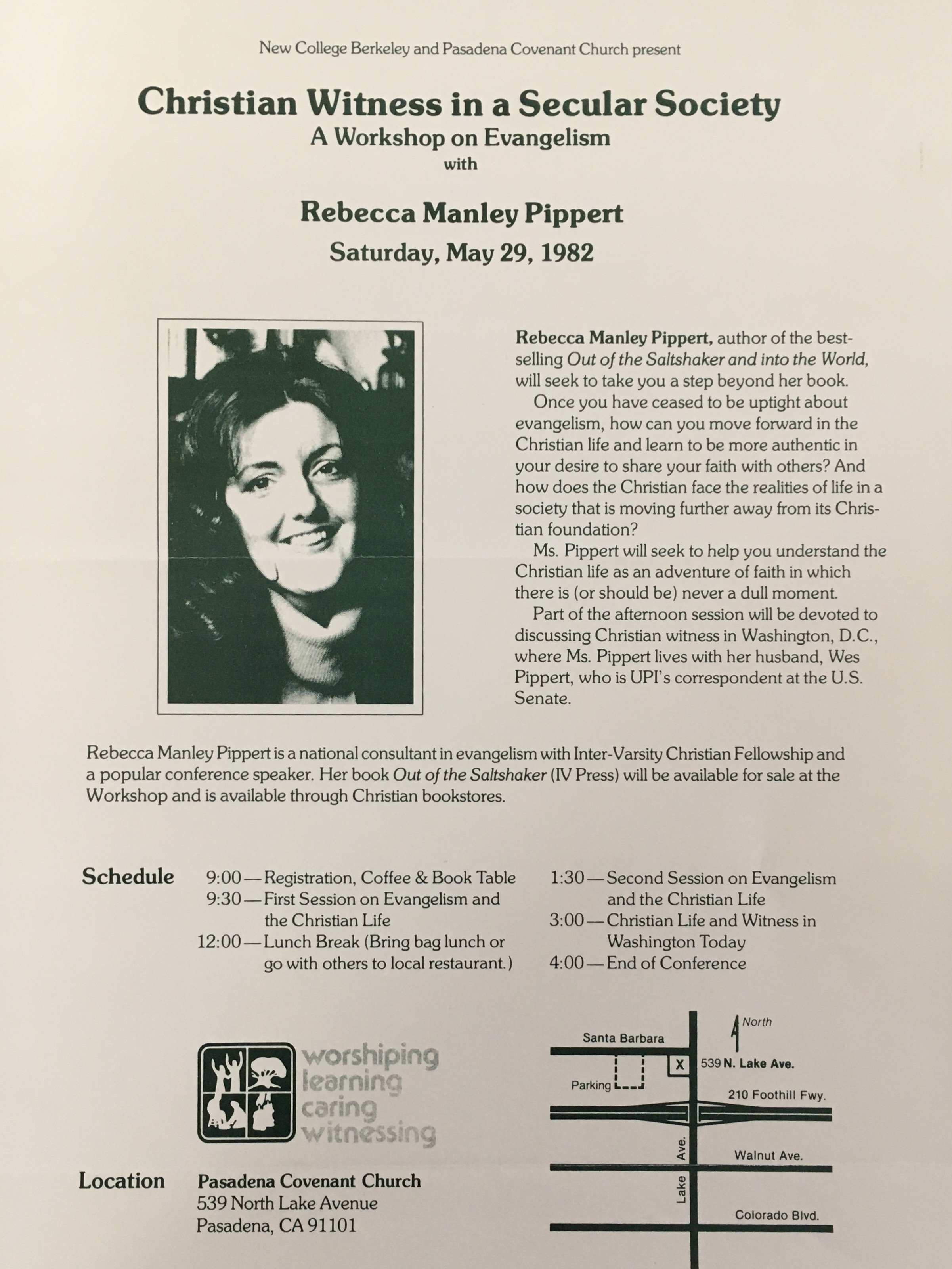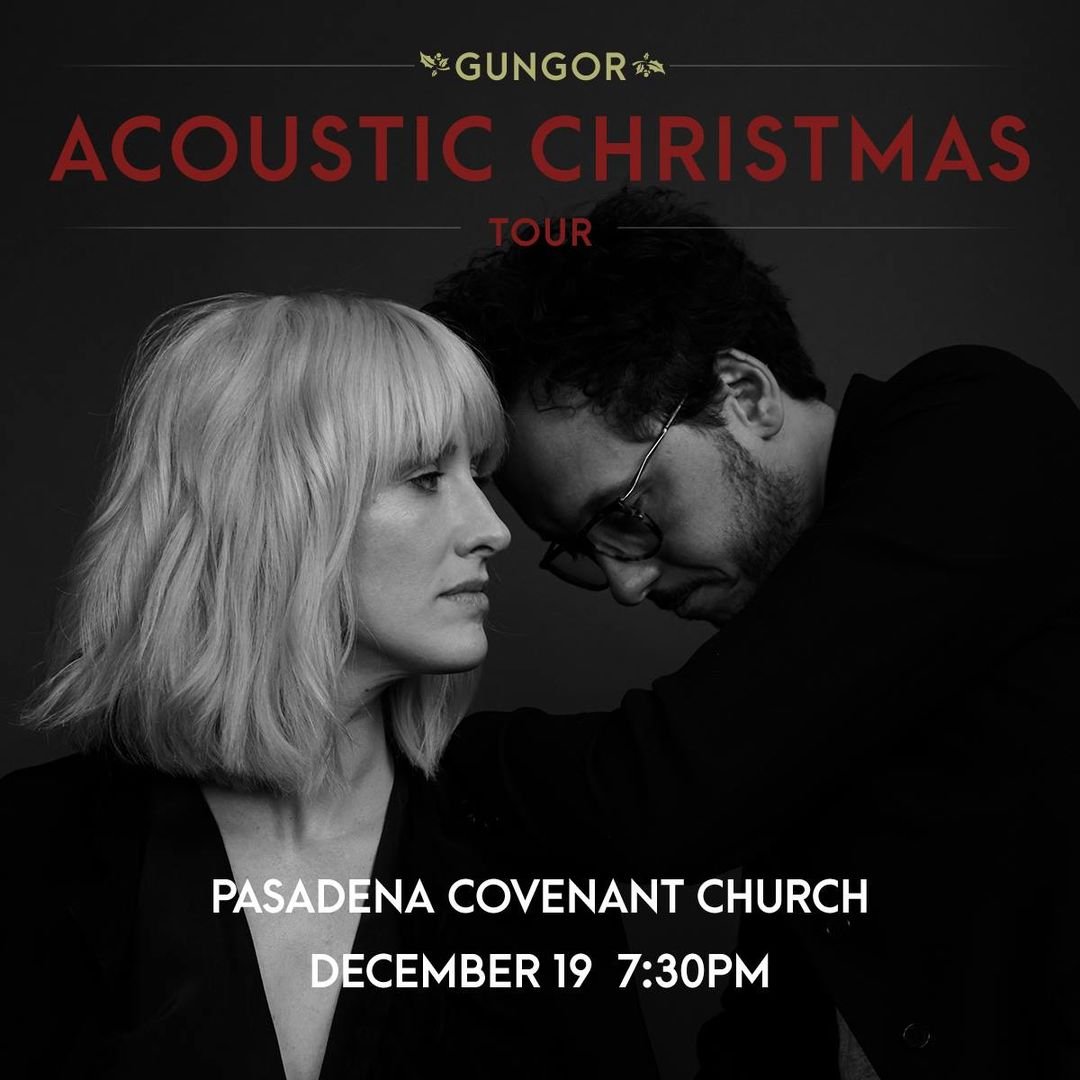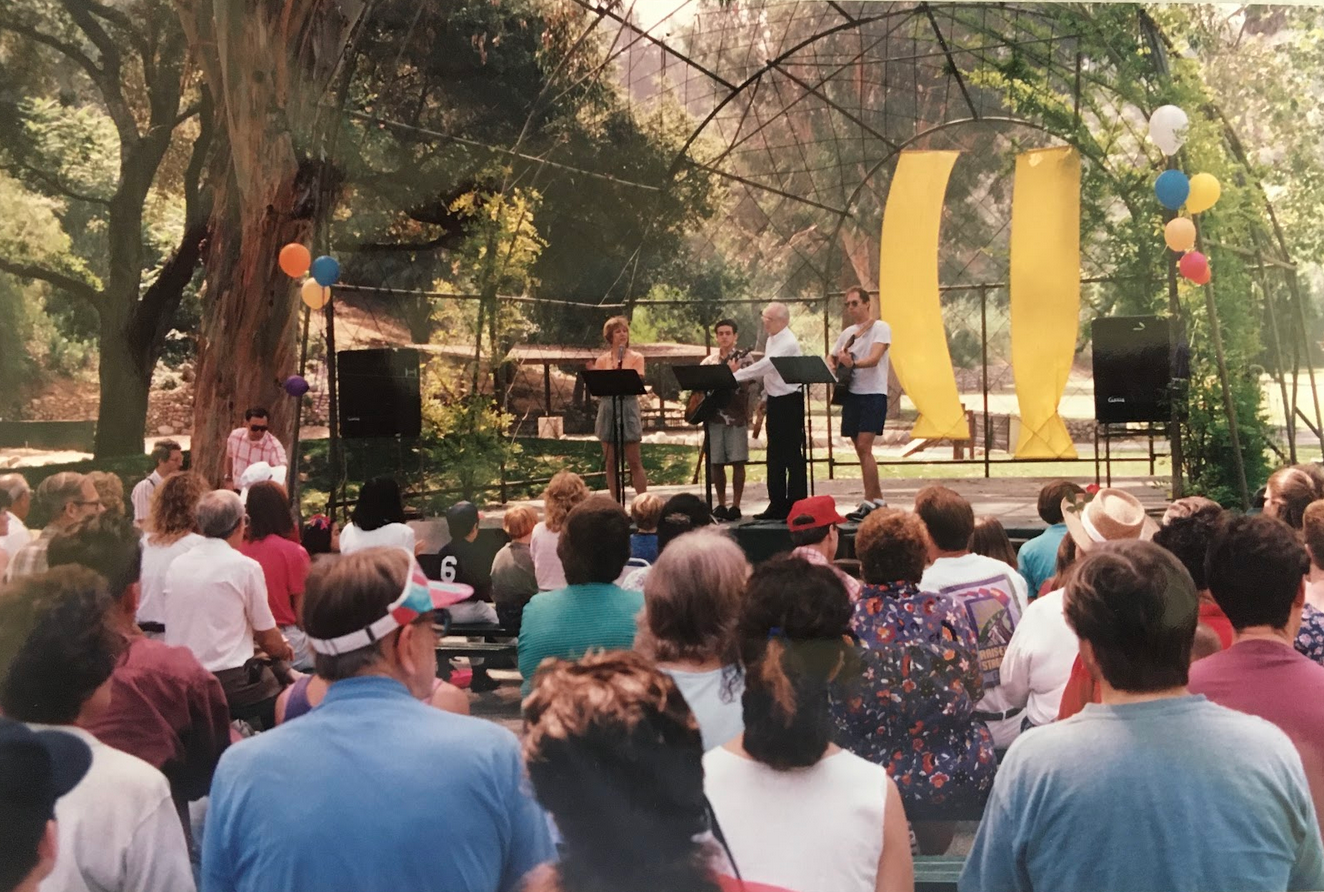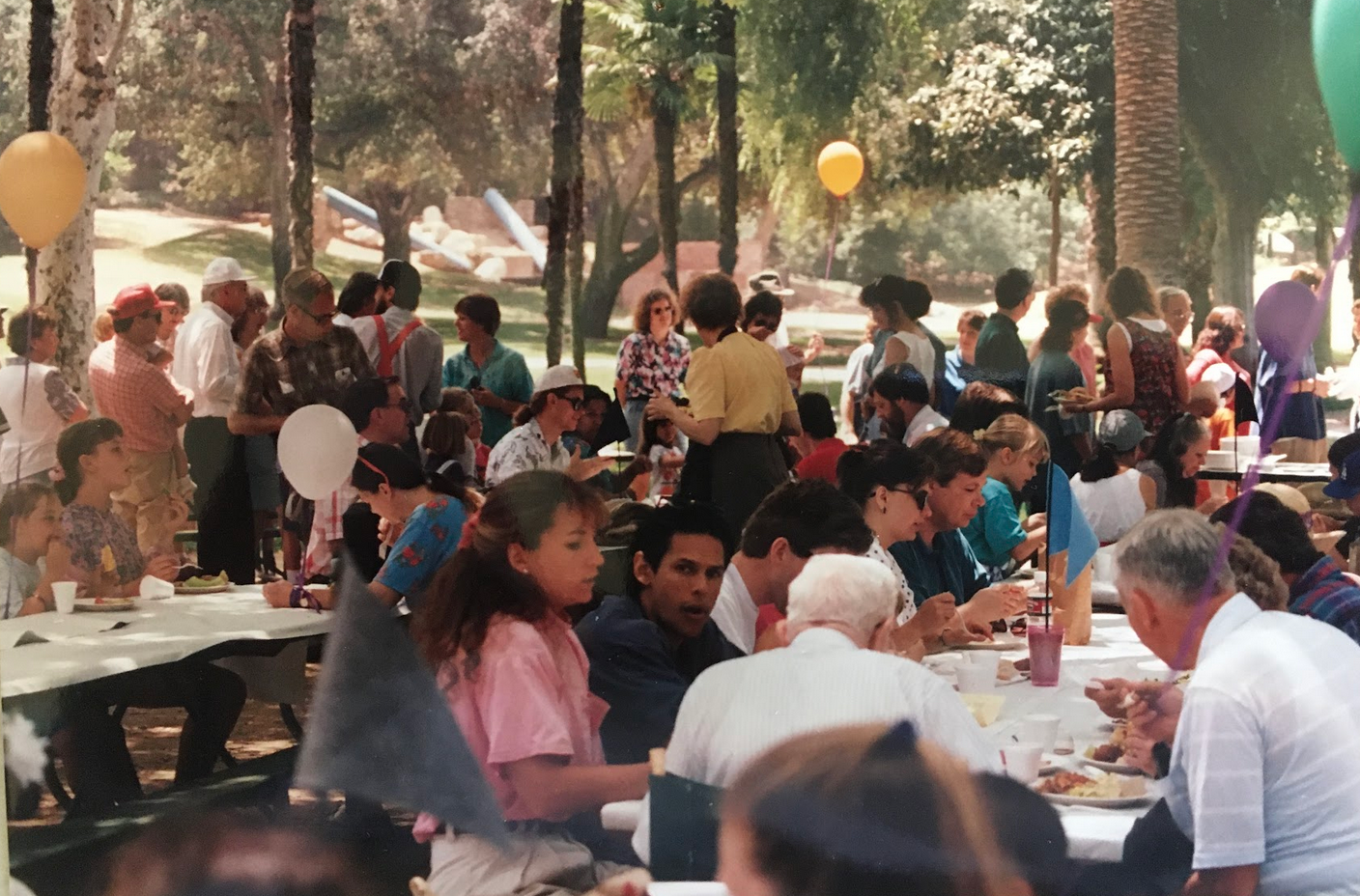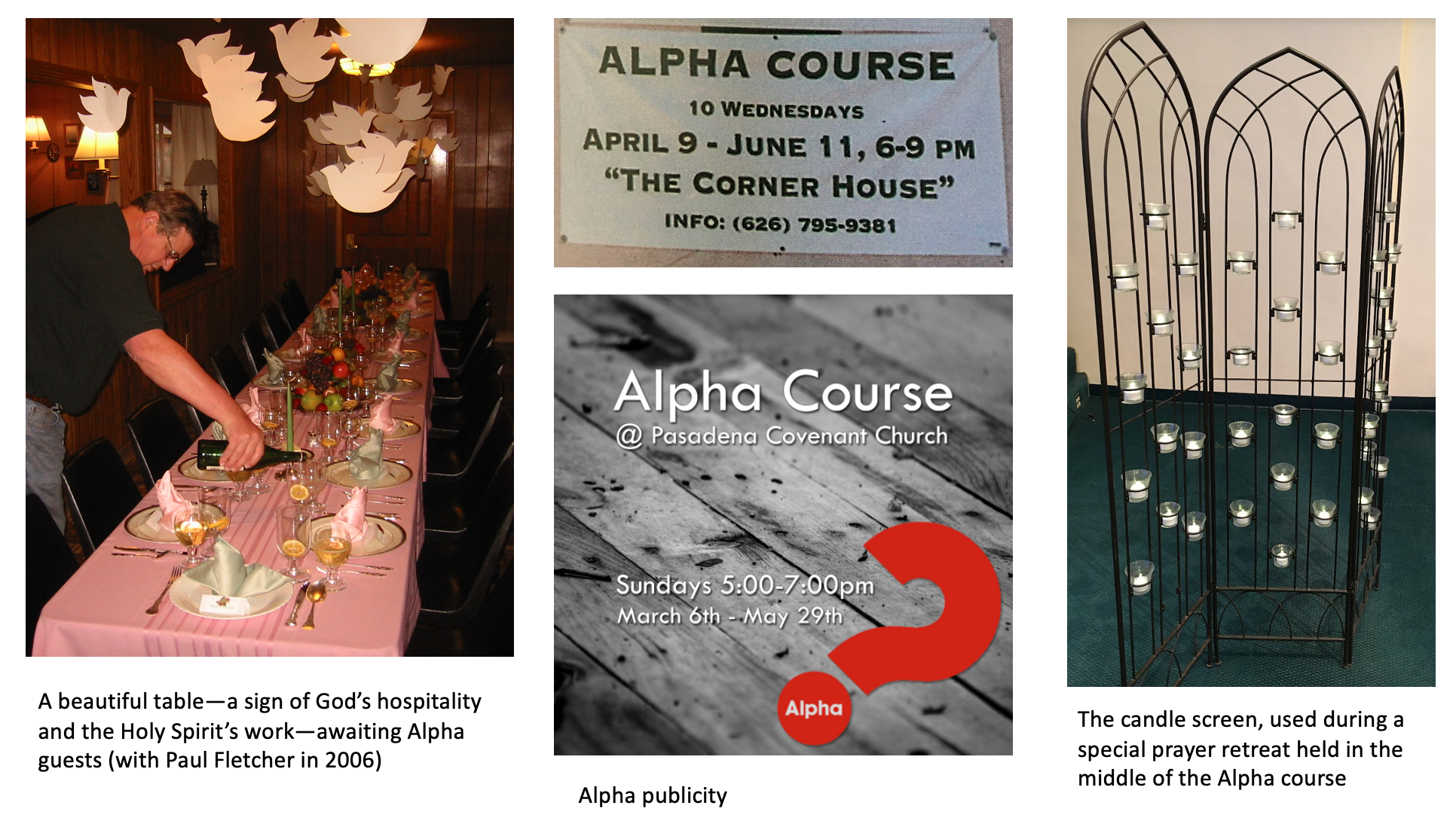Evangelism
Evangelism as a Priority
The Covenant denomination doesn’t have a long “statement of faith”—just a short list of affirmations. One of them is: “We affirm the necessity of the new birth.” The description of the affirmations goes on to state: “The earliest name attributed to Covenanters was ‘Mission Friends,’ people who covenanted together for the purpose of common mission both far and near. They understood the work of mission to be evangelism and Christian formation, as well as the benevolent ministries of compassion and justice in the face of suffering and oppression.” While other posts in this series will deal with the compassion and justice component of this statement, that is, demonstration evangelism, it’s proclamation evangelism that is our focus in this post. (The time frame detailed in this post is mostly from the 1950s on, because less documentation is available from previous decades.)
Rallies and Altar Calls
Evangelism in the 1950s and 1960s was often done by means of big campaigns and rallies to reach the “masses.” Pasadena Covenant was no exception. Church reports mention the first Billy Graham Crusade held in downtown Los Angeles in 1949, as well as subsequent crusades. Members of Pasadena Covenant were encouraged to attend, invite friends, and volunteer. Sometimes pastors traveled to do evangelistic campaigns for each other. Pasadena Covenant welcomed, for example, Edwin S. Johnson, pastor of the Covenant church in Oakland, for an “evangelistic campaign” in 1951 and George Bostrom, pastor of the Covenant church in San Francisco, for a campaign in 1961.
Evangelism also took place within the church itself. Arvid Carlson was a pastor who gave altar calls, especially during the Sunday evening service. That is, from the altar at the front of the church, he called on people who wanted to turn their life over to Jesus to give a public sign that they had done so, by raising their hand or coming up to the front. Confirmation class, when young people met with the pastor for two years , also gave youth a chance to publicly choose Jesus as Lord and Savior. Youth camps were also expected to be places for such decisions.
Supporting New Covenant Churches
But the church also engaged in another kind of evangelistic activity at the time. The 1950s were a time of population growth and land development in Southern California. Looking back at how the church in Pasadena had at first received help from the Los Angeles Covenant Church and looking ahead to the spiritual needs of young families moving into expanding housing tracts, Pastor Arvid Carlson led the congregation to support regional church planting. Some of this was accomplished directly. For example, in 1951 a church in Monrovia was started with $17,000 in financial support, a couple of days of volunteer building labor, and 22 charter members including a new pastor, all from Pasadena.
Another means of supporting new churches was through the denominational Covenant Church Extension Fund. Over the course of the next ten years the church gave tens of thousands of dollars, along with people, to support six more new churches from San Diego to Azusa to Santa Barbara. There were a couple of additional reasons Pas Cov spun off daughter churches. One was that Arvid Carlson didn’t want to dilute the church’s capacity to be a caring community by growing beyond 500 congregants. Another was a commitment to evangelism and a belief that young churches would more easily attract new people to hear the good news. The next pastor, though equally committed to evangelism, had different priorities, especially reaching young people. But before we get to that, there’s one more bit of history on how Pas Cov has supported other churches.
After a denominational planning process called Vision to Action, and getting the sense that God was calling us to “do something big beyond the walls of our own church for the sake of God’s kingdom,” in 2003 Pas Cov decided to partner with a church planting effort in South Los Angeles, Church of the Redeemer. This entailed contributing $100,000 over the first three years through the denomination (later extended for another three years), as well as sending volunteer help. The volunteers included teams for summer service projects (2003-2009), a worship band leader in 2006, food for after-church hospitality, and a board member for Redeemer’s nonprofit community-development arm. Many people were involved, but Jamie Knauss, John and Mary Barkman, and Jim Tyberg deserve special mention.
Summer service with Church of the Redeemer, 2007
Campus Club
The church’s ministries to families, which we talked about earlier, often had evangelistic purposes. Cradle Roll was envisioned as a way of reaching young families for Christ. Vacation Bible School was for unchurched children as well as those in the church. Another such ministry with a strong evangelistic focus in the later 1950s and 1960s was Campus Club for senior high students. This was an outreach-oriented group that met mid-week. It included afternoon games, conversation, and rooms for study; dinner; and an evening club meeting with singing, skits, and a talk. It was undergirded by a prayer team who met weekly, by another team of volunteers who cooked and served dinner, and by a series of youth pastors and lay volunteers. Started in 1956 by youth pastor Jon Braun, its peak years were 1964 to 1971. A church newsletter article in 1967 wrote, “The dynamic young director [Gary Copeland] convinced students that Campus Club was a means of bringing friends to know more about the claims of Christ. Under his guidance the club’s attendance soared to 80 and 90+. We are expecting even more growth under the enthusiastic leadership of Rob Johnston.” The year 1968 included evangelistic training by Campus Crusade staff; winter camp saw 138 young people attending.
In 1969, Dave Hicks, who had grown up in the church, became director of senior high ministries at Pas Cov. He continued the passion for outreach. A teacher at Pasadena High School allowed him to visit classes once a semester and answer questions about religious concerns. Dave organized the youth into action groups at Muir, Blair, Pasadena, and Arcadia High Schools. The Sunday evening youth meetings often focused on discipleship training. More than half of Campus Club attendees were from outside the church. In 1970 Dave, along with Curt Peterson and Dennis Dawson, pledged to walk a mile for every new person brought to Campus Club in a month’s period, with extra miles for those who attended all month. The gym was filled with 130 high schoolers during the last week of the contest. “More than half a dozen have already committed their lives to Christ as their Savior,” read the report, which then described how Dave and his team fulfilled their pledge by walking 120 miles from Pasadena to Santa Barbara.
Our current Director of Student Ministry, Christy DePree, has an approach to being present in local high schools that works for today–such as volunteering at the Pasadena High School Green Club. She is also collaborating with other churches on the “Pasadena Youth Coalition” that puts on joint quarterly events for students throughout Pasadena.
Special Events
Although we have covered music and the arts in previous blog posts, it’s worth mentioning the evangelistic role they have played in the church. Roland Tabell envisioned all the concerts and musicals done at church as a means of outreach. In 1971, he formed Sonlight Singers [link] as a way for high school and college students to combine music and evangelism during concerts and tours. Children’s choir too has been a way to invite neighbors to participate in the life of the church.
Dave Mark, Minister of Outreach at the time, arranged for Noel Paul Stookey (of the popular folk trio Peter, Paul and Mary) to give a concert at church in 1981 because of the way the singer had of talking about the “spiritual dimensions of life in a non-threatening way.” Half of the audience were not part of the church family. The following year, the pre-evangelism event was pro-football player and actor Rosey Grier. This was supplemented with a 1982 workshop by noted evangelism expert and author of Out of the Saltshaker, Rebecca Pippert.
Do you remember other concerts, plays, and events we were encouraged to bring neighbors to?
Events such as Lucia Fest and church in the park were also envisioned as occasions for inviting friends who might otherwise not be interested in church.
Bringing My World to Christ brochure, ~ 1990
Another low-key kind of evangelism was “Bringing My World to Christ,” a Covenant denominational initiative started in the 1980s encouraging people to evangelize with “prayer—care—share.” Often there was a designated Sunday in which the congregation would write the names of those they committed to pray for over the next year.
Alpha
After learning about Alpha at a conference, Pastor Charles Barker formed a group to discern whether Pas Cov might host an Alpha course—a ten-week practical introduction to Christian faith especially designed to be safe for seekers with doubts and questions. Randy and Marianne Hill have been spearheading Alpha at Pas Cov since then, but many, many volunteers helped to host meetings, prepare meals, host discussion groups, and more. The first course was held in 1998. Randy writes, “It was a truly remarkable experience as we watched the participants go through a transformation facilitated by the word of God, prayer, and the Holy Spirit speaking into all of our lives.” Between then and 2017 about 20 Alpha courses have been held at Pas Cov, including one especially for high school students, as well as two specialty courses led by Lina and William Myrvold, Alpha Marriage and Alpha Parenting.
2002 Thoughtful Journey brochure
In addition, the Alpha team initiated a speaker series called The Thoughtful Journey—easy to invite unchurched friends to, and scheduled to allow interested guests to sign up for the next Alpha. Calling on the expertise of people in the congregation, the talks in 2002, 2003, 2004, and 2006were:
• Experiencing the Spirit, Hollywood Style (Rob Johnston)
• Building Resilient Relationships (Jack and Judy Balswick)
• The Transcendent in Modern Studies of the Universe (Richard Doyle)
• Following the California Dream: from Buffalo Chips to Bungalows (Tom Andrews)
• Images of Pasadena (Joe Stoddard)
• Knowing God through our Psychology (Randy Sorenson)
• Virtual Humans and Video Games (Randall Hill)
Summary
Different kinds of evangelism have been encouraged at different times, from Cradle Roll to new church planting to Bringing My World to Christ to Alpha. In this post we’ve remembered some of them. Even more will be covered in a future post about service to our neighbors, since demonstration and proclamation are integrally linked as we share the good news.
Beyond 100
Ways to evangelize change over the decades, but the command of Jesus in Matthew 28 to “make disciples” is still the same. And people will always yearn to live a good life, in every sense of the word. How will Pasadena Covenant invite future generations into the good life in Christ?
Interested in the current Covenant denominational evangelism initiative, BLESS? That stands for Begin with prayer, Listen with care, Eat together, Serve in love, Share your story.
P.S. John Stott writes: “We have two instructions of Jesus – a great commandment, “love your neighbor,” and a great commission, “go and make disciples.” What is the relation between the two? Read the entire article here. And to read more about how Pas Cov has tried to love our neighbors, look for a post coming in July.
We are so grateful to the many who have sought to follow God over the past century,
and now we seek to imitate their faith for the next hundred years.
Please join us in giving to this legacy of faithfulness!

